Account of the main developments in the Israel-Hamas war and hostilities committed by the Iranian Axis
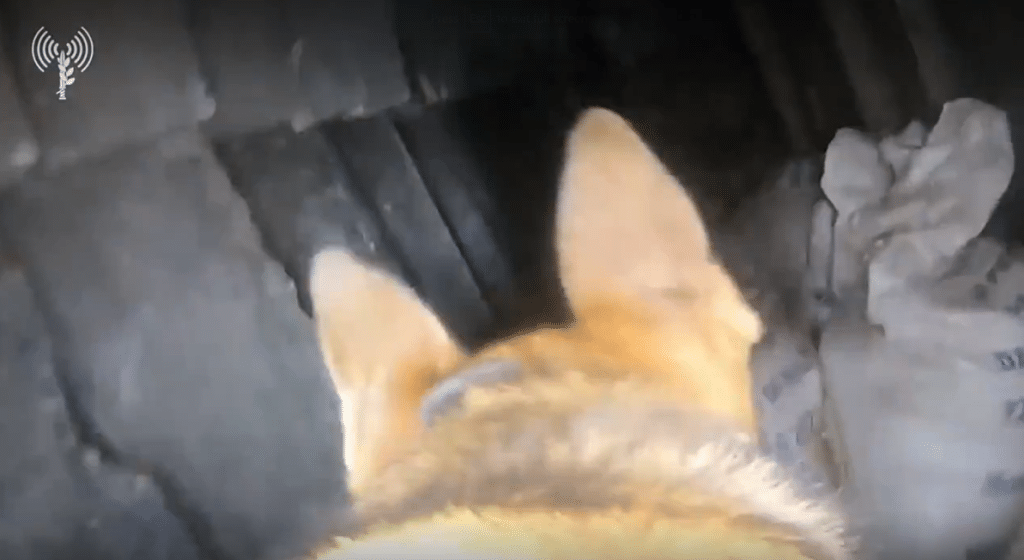
Overview
- Egypt proposed a plan to end the war which would have included the release of all hostages in exchange for the release of Palestinian prisoners and the establishment of a unity Palestinian government, initially to be run by technocrats. Israeli cabinet discussed the plan out of good will, but the conditions do not correspond with the strategic objectives set by Israel to destroy Hamas and assure Gaza can no longer pose a threat.
- Israeli troops found thousands of documents and millions of computer files in Hamas strongholds that were sent to Israeli Military Intelligence for analysis. The material included details of a network of terror tunnels including the specific locations of IEDs. It has been reported to include invaluable materials in tracking Hamas positions, military plans and operational procedures.
- The IDF has released a report detailing the failures in operational procedures that led to the mistaken shooting of the 3 Israeli hostages in Gaza.
- The Pentagon has confirmed that the attack of an oil tanker near India was an Iranian ordered attack.
- Hezbollah escalated its attacks including one that featured an anti-tank missile shot from a mosque targeting a Church in Ikrit, a Chirstian village in Northern Israel. One civilian and 9 soldiers were injured in the incident. The IDF retaliated by attacking Bint Jebil for the first time since the 2006 Lebanon War.
- IRGC senior commander Reza Mosawi, reportedly in charge of the Qods Force’s operations in Syria, has been killed in an explosion near Damascus, allegedly an airstrike carried out by Israel. This prompted Iran to escalate its threats against Israel, which has not claimed responsibility over the incident. The Iranian Foreign Minister announced that Tel Aviv needs to start counting backwards.
- An explosive device exploded near the Israeli embassy in New Delhi. It is being investigated.
- Rockets were launched in Gaza from area in the North where the IDF maintains operational control demonstrating that the IDF has not eliminated all terrorist infrastructure in the area.
- The US retaliated against the Houthis in the Red Sea shooting down drones over sea. This order came directly from Biden after militias in Iraq attacked an American base where servicemen were injured.
- For the first time during this war, a UAV from Iraq exploded in the Golan region.
- In a village near Tulkarm (in Samaria), IDF troops seized self-made rockets that could reach Gush Dan (central Israel).
- In a bid countering US sanctions, the Russian-backed Eurasian Economic Union (EEU) has signed a full-fledged free trade agreement with Iran. This permanent agreement is replacing a temporary one from 2019.
- South Africa appealed to the International Court of Justice requesting the opening of an investigation against Israel for committing a genocide in Gaza.
- As negotiations between Saudi Arabia and the Houthis continue with representatives from the UN and the US, the Saudis asked the Americans to show more assertiveness toward the Houthis.

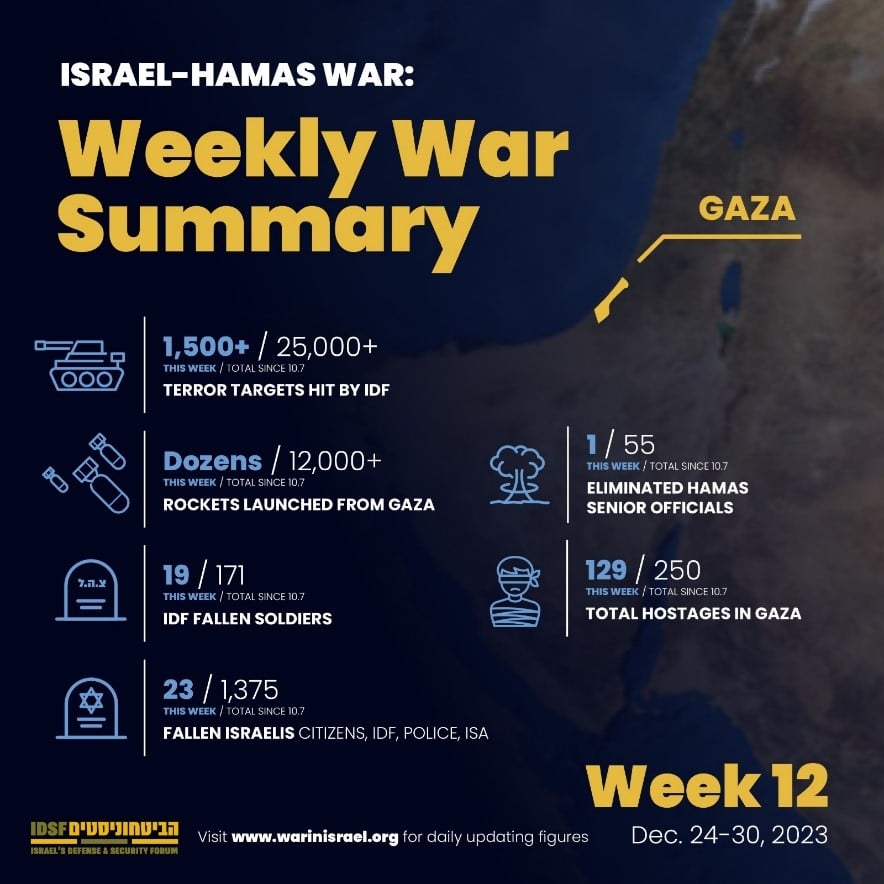
Gaza Strip
Negotiations with Hamas over the hostages
- After Israel tried to find a solution to a possible hostage deal, sending Mossad chief Barnea to Qatar and Warsaw in order to meet with Qatari and American officials, Hamas kept entrenching its position with no serious attempt to find a middle ground. Sinwar has reportedly insulted the Egyptian security services when they tried to see if he was open to any deals. Hamas stated it would be open for negotiations only after Israel implements a complete cessation of fighting, withdrawal to the “October 7th” lines, opening of the Gaza crossings, and the release of all the Palestinian terrorists in Israeli prisons (over 6000). Hamas considers the last deal as a failure as Israel continued its offensive into Hamas strongholds. According to an Egyptian source, Sinwar is the cause of a deadlock.
- Later, Hamas reportedly rescinded its demand to release all prisoners, and negotiations included a proposal for a complete halt of the war for one month.
- These negotiations may also show early signs of fractures within the different factions in the Hamas leadership. Sinwar, should he survive the war, is facing elections to the Hamas leadership in Gaza next year. He represents the Iranian faction in Hamas, while Musa Abu Marzouk represents the “Qatari” faction has said in an unprecedented statement that Israel has rights and he would be willing to recognize them, yet not at the expense of the Palestinians. He later retracted that statement and claimed the media misquoted him. There is a different tone to the statements made by the Hamas Bureau based in Qatar whose members enjoy a luxurious lifestyle which they are afraid to lose, and the militant faction within Hamas based in Gaza led by Sinwar.
- Meanwhile, the IDF has a released a report detailing the failures in operational procedures that led to the mistaken shooting of the 3 Israeli hostages in Gaza.
- The report showed that IDF troops have already encountered instances in which terrorists shouted in Hebrew to try to lure them into traps within buildings. The building that the hostages resided in was near a house that the terrorists booby trapped and a dog from the IDF’s K9 Unit “Oketz” was killed.
- The first 2 hostages were shot by snipers from 38 meters who were mistaken for terrorists. The last hostage was shot 15 minutes later. The battalion commander called for halting the fire but the soldiers who ultimately shot the hostage could not hear the command because of a nearby tank. The causes of the mistakes were confusion, not passing the information about the hostages to all troops on the ground, not following the rules of engagement and not being able to hear commands – but above all, the continuous tension in a scene of a battlefield, with non-stop traps and attacks by Hamas forces and the fear for the lives of the troops.
After announcing that Gadi Weinstein, an Israeli-American, considered kidnapped in Gaza was announced to have been murdered on October 7th last week, his wife Judy was announced to have been murdered as well on October 7th.
- As the pressure on Gaza mounts more and more initiatives are accumulating to host Gaza refugees in foreign countries. Canada has announced it would issue work and study permits to Gazans with relatives in Canada. Al Akhbar newspaper, a Hezbollah mouthpiece, has reported a month ago that Egypt is pushing Arab countries to take a quota of the refugees to their countries as well. Meanwhile, Israeli cabinet ministers have openly considered a willful relocation project of Gazan refugees to other parts of the world.
- Le Figaro released a report detailing how Hamas created “dummy” commanders to derail Israeli intelligence. It also revealed that Hamas updated Hezbollah about the attack through Saleh Al Arouri in Lebanon only 30 minutes before it started. Sinwar kept his cards close to his chest and did not share plans with top Hamas officials. Hamas is also reportedly furious at Hezbollah for not joining the fighting on October 7.
- The New York Times released a detailed and highly disturbing report on the weaponization of rape and sexual violence on Oct. 7 by Hamas. According to the two-month investigation, that included at least 150 witnesses, including medical personnel, military officials and victims, video footage and telecom data, multiple rape cases were documented, alongside sexual assault, mutilation, and spinechilling cases of execution.
- A commission of UN agencies, governmental and non-governmental organizations and civilian social organizations published a report about the hunger crisis in the Gaza Strip. It claims that the residents of the Gaza Strip face “acute food insecurity,” classified as the third of five phases of risk according to the UN’s Integrated Food Security Phase Classification UN’s (IPC) index. The UN has been known for publishing biased reports on Israel, that adopt the Palestinian narrative at almost face value, with figures originating in Hamas’ data (under the title of “Gaza health officials”) and compromised of NGOs such as HRW, B’tselem, Adala and others.
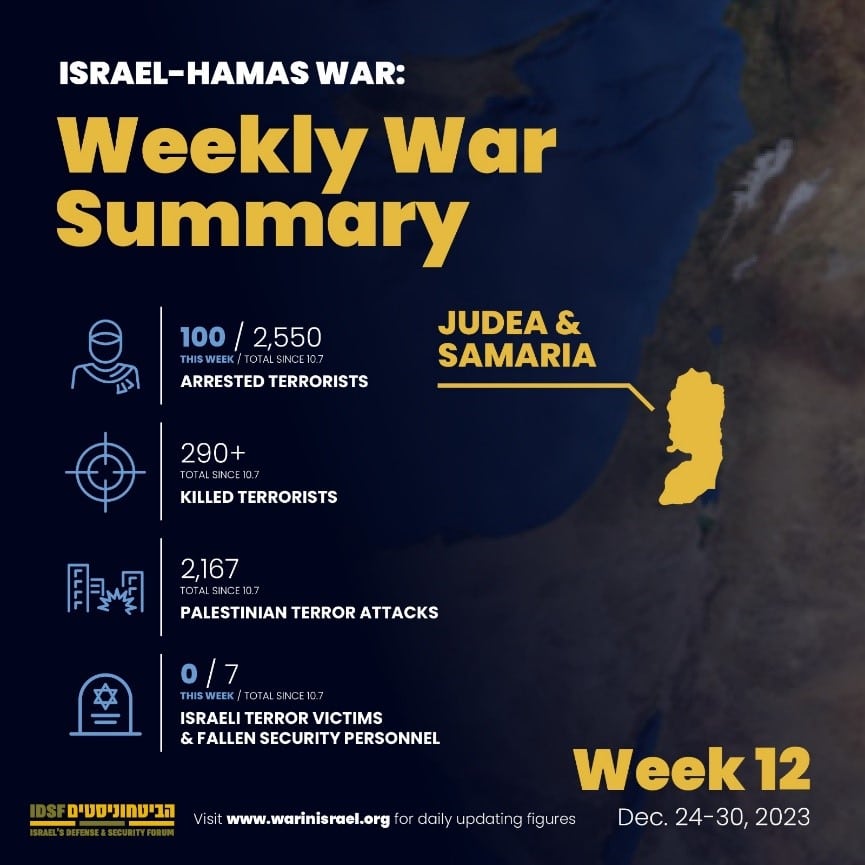
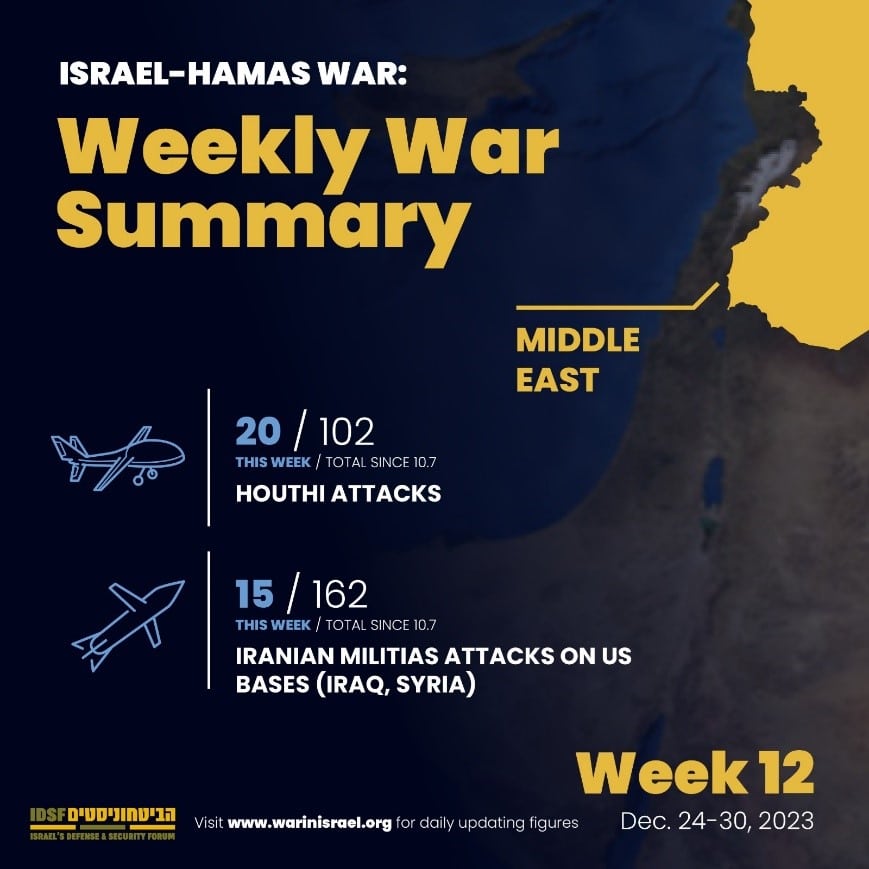
Operational Update
- This week, the fighting expanded into the center of the Gaza Strip – Dir Al Balah area, as well as the South in Khan Younis alongside operational activity to some extent in the Rafah area. The IDF is reported to also be operating along the Philadelphi Route from Kerem Shalom Crossing to Rafah, an area that links Gaza to Egypt. This is meant to disrupt the tunnels from Sinai to Gaza. The activity took place up to 3 KM from the border.
- The IDF continues its ground operation in Khan Younis and Dir Al Balah, while carrying out strikes in Rafah and keeps on tackling the vast tunnel network underneath Gaza. The campaign in the center of the Gaza Strip is focused on the Al Marazi and Bureij Camps. Bureij and Nusirat Camp, to its west, are currently targeted by airstrikes prior to advancing to another Hamas stronghold, Dir El Balah, home to Hamas’ Central Brigade. The IDF cannot carry out as many airstrikes as needed in the area between Khan Younis and Rafah that houses around 1.2 million displaced persons, reportedly given the Biden administration’s pressure to reduce air strikes in heavily populated areas. As a result, Khan Younis is experiencing more surgical action compared to northern Gaza.
- The tunnel network remains a fierce challenge, and is being handled through various means, including soldiers raiding the tunnels, but also trained dogs, flooding, and advanced technologies.
- In Gaza City’s Sheik Radwan neighborhood, heavy resistance by different Palestinians factions was carried out using explosives, RPGs, anti-tank missiles, and sniper fire. In the Shati neighborhood, which has been already conquered, terrorists at times attack IDF soldiers by using tunnel openings that have not been cleared yet. The last Hamas stronghold in the northern Gaza Strip is Daraj Tufah, with the IDF advancing its operational activity there in order to take full control over the area.
- Invaluable intelligence and armaments inside schools: The IDF raided a school in Sheikh Radwan neighborhood that housed many civilians, where the troops found weapons including explosives, magazines, rifles, IEDs, and grenades. Israeli troops found thousands of documents and millions of computer files in Hamas strongholds that are sent to Israeli Military Intelligence for analysis. The material included a network of terror tunnels and IEDs in specific locations which was operationally useful for the troops on the ground.
- This intelligence reportedly proved invaluable in alerting forces against ambushes, uncovering Hamas military positions and rocket launcher positions, as well as operational plans. These troves of documents are reportedly being handled in a designated facility by hundreds of troops specializing in the sorting out and handling of enemy property.
- Lt General Herzi Halevi, IDF Chief of General Staff, said in address to the nation that “there are no shortcuts in a systematic dismantlement of a terrorist organization”. He spoke about the need for a prolonged, months-long campaign in Gaza. The IDF captured a local concrete factory that had been used for weapons manufacturing and building tunnels.
- The IDF found one of Sinwar’s escape apartments that led to a tunnel, 20 meters underground and 218 meters long that connected to a network of tunnels. The tunnel included war rooms, ventilation systems, elevators, ACs, and even prayer rooms.
- This week was the first week of the war that rockets were not launched to the center of Israel with only a few dozen launched towards the cities of Sderot and Ashkelon. This may indicate that Hamas is saving its long-distance rocket arsenal for the future.
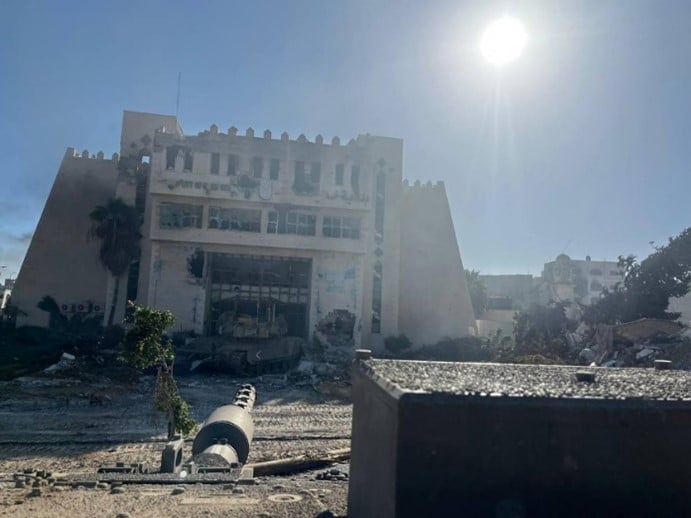
82nd Battalion of 7th Armored Brigade captures the Municipal building in Kahn Younis, Credit: IDF Spokesperson Social Order in Gaza
- The social order is gradually breaking down as Gaza civilians have become more daring in physical confrontations with Hamas which consistently steals humanitarian aid. Hamas is using armed gangs to steal food from the aid trucks coming from the Rafah Crossing. It steals food and other essential items from designated humanitarian zones. Each gang has its own destruction line and receives payment as a coupon and bribes. There are other signs of the deterioration of the social order with more reported incidents of civilians fighting Hamas militants. Hamas murdered a teen related to a crime family when he was waiting in line to receive aid. In response, civilians burned down a Hamas police station.
The Day After in Gaza
- Israel Prime Minister Benjamin Netanyahu visited Gaza to meet IDF troops who are operating on the ground.
- Later during the week, Netanyahu published a piece in the Wall Street Journal presenting the pillars for the cessation of fighting with Hamas and the “Day After”. According to Netanyahu, there are three phases to achieving a long-term solution: the destruction of Hamas, the demilitarization and control of the Philadelphi Route and establishing a “temporary security zone” on the perimeter of Gaza, and de-radicalization – stopping the education for violence among Palestinians. He did not mention the Israeli hostages. He also referred to civilian casualties in Gaza and called upon the international community to “place the blame for these casualties squarely on Hamas”, given its malign fighting tactics of operating from within a civilian setting.
- Netanyahu repeated his rejection of entrusting Gaza’s recovery in the hands of the Palestinian Authority, calling it a “pipe dream” (See – IDSF, “Terrorists in the Civil Service: Palestinian Authority’s Well Budgeted and Institutional Apparatus Designed to Incentivize Terrorism and Create Jobs for Terrorists“ and “’Praiseworthy Attack’: How the Palestinian Authority and Fatah Reacted to October 7 and Why They Cannot Govern Gaza”).
Various developments
- The Palestinian Red Crescent in the Gaza Strip reported that since December 21, 2023, 4,760 humanitarian aid trucks for the Red Crescent had entered the Gaza Strip through the Rafah Crossing, bringing food, water, medicine and medical equipment.
- Mahmoud al-Aloul, deputy chairman of Fatah (Mahmoud Abbas’ deputy in Fatah), who is also a member of Fatah’s Central Committee and in charge of the Ministry of Mobilization and Organization, said on PA TV that what happened on October 7, 2023 (i.e., the terrorist attack on the Israeli communities bordering the Gaza Strip) was justified because of “the occupation and its ongoing crimes.” He claimed the main objective of Israeli Prime Minister Benjamin Netanyahu in the war in the Gaza Strip was to deepen the internal Palestinian schism to prevent the establishment of a Palestinian state. On the other hand, the objective of the Palestinian leadership was to stop the war immediately (Quds Press, December 26, 2023).
Lebanon
- The northern front is escalating week by week. The boundaries of “legitimate” actions between the two sides are continually restricted while both parties for the time being show signs they are not interested in escalating the conflict into a full-blown war. However, the frequency of Hezbollah attacks is increasing with days with over 10 attacks per day.
- Israel’s interest is to restrict its actions to the Gaza front where most of the conscripted, non-reserve army is deployed. Hezbollah has strong internal pressures to refrain from escalating the conflict, as the Lebanese state is pushing against any conformation with Israel. Iran could be keeping Hezbollah for future needs as a “shield” deterring Israel from attacking Iran itself.
- This week, the IDF attacked areas in Lebanon for the first time since the 2006 Lebanon war. More artillery units have been deployed with higher frequency of attacks from both sides. Hezbollah has boasted on social media that they drove Israelis from the North and have damaged most houses in Manara.
- According to a Lebanese source, there were over 100 shells that landed in Lebanese territory since the beginning of the war.
- The IDF spokesperson said that the deployment of Hezbollah forces is much smaller near the border compared to what it was on October 7th. He said that Israel would no longer tolerate the presence of Hezbollah on the border and would act militarily to achieve that goal if diplomacy does not yield fruit.
- On the afternoon of December 27, 2023, a barrage of about 30 rockets was fired at Kiryat Shmona, damaging property. Hezbollah announced that the rockets had been fired in response to attacks on civilian homes in Bint Jbeil and in solidarity with Gaza.
- UNIFIL announced the wounding of one of its soldiers and damage to a vehicle in an attack carried out by a group of youths in the town of al-Taybeh in south Lebanon. It was noted that the attacks were not only condemnable, but also contravening of UN Security Council Resolution 1701 and Lebanese law, and that the soldiers’ freedom of movement was essential to restore security and stability along the border. (See – IDSF, “What is UN Security Council Resolution 1701?”)
- Nasser Yassin, minister of the environment in Lebanon’s transitional government, said the number of displaced persons from south Lebanon stood at 78,000.
- Leaders of Fatah, PIJ, Hamas, PFLP and other Palestinian factions met in Beirut to show a unified Palestinian front against Israel, reiterating their stance that any hostage deal would have to start with a ceasefire as a precondition for negotiations.
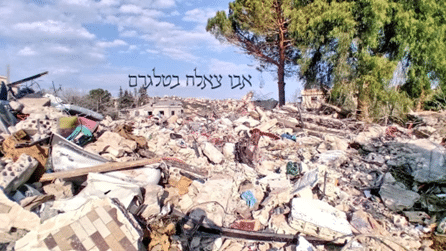
The damage in Bint Jebil, Credit: Abu Saleh, Telegram (https://t.me/abusalehg1) 
The damage in unspecified location in Lebanon, Credit: Abu Saleh, Telegram (https://t.me/abusalehg1) Judea and Samaria
- Hamas and other factions continue to incite to violence against Israeli civilians in their communities. Hamas may try to create a new equation of the war in which events from the Gaza front are related to retaliation on the Judea and Samaria front. Hamas wants to control the war by being the proactive party with the imitative with the hope that Israel would only respond to its actions. Hamas released infographics with the same messages of “vengeance for Gaza” with the upside-down triangle pointing at civilians like in a video game.
- Hamas has released other infographics after failed terrorist attacks with the message that “this is on the tip of the iceberg” suggesting they are preparing for larger attacks.
- Israel ramped up its counterterrorism operations on the financial plane as well. Israeli security forces, in cooperation with the Israel Police Forces’ Lahav 433 Cyber Unit, detained 21 wanted Palestinians suspected of involvement in financing Hamas activity. During the operation, funds used to finance terrorist activity worth tens of millions of NIS. It was the first operation of its kind intended to hit the funding channels of Hamas and the other terrorist organizations.
- The IDF has continued its raids to dismantle terrorists’ infrastructure. This week, significant activity took place in Tulkarm and the surrounding villages, including Nur Shams.
- IDF reports that since the beginning of the war:
- Over 290 Palestinians have been killed, most of them were terrorists.
- Over 2,500 were detained, 1,300 of which are Hamas terrorists – a record number.
- 1,700 new administrative detention notices have been issued. In total, there are 3,000 administrative detainees in Israeli custody.
- Over 25 aerial attacks, highest frequency since the second Intifada.
- Over 35 brigade operations to dismantle terrorist infrastructure.
- Multiple weapon labs were destroyed, hundreds of weapons were confiscated, and thousands of explosive devices were tracked down.
- Dozens of terrorists surrendered and were subsequently arrested.
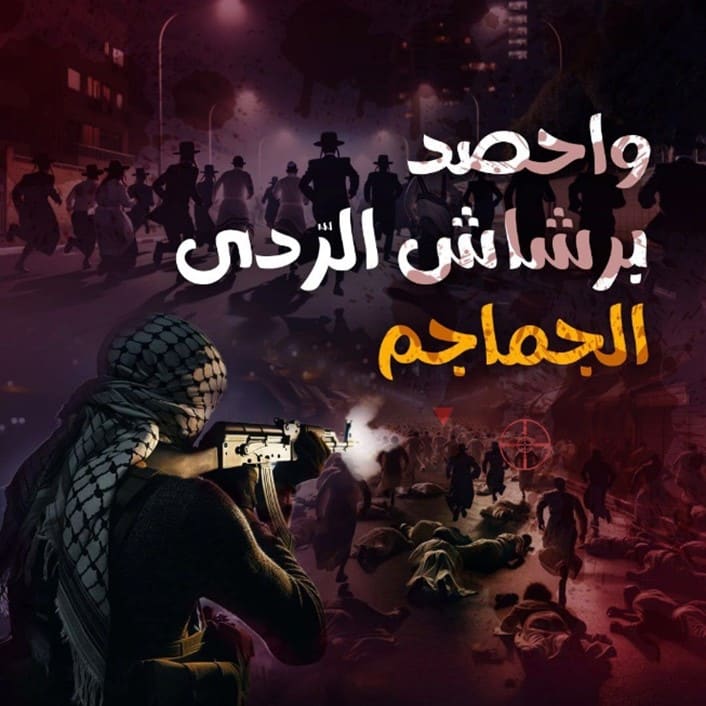
“Collect skulls with the rifle” | @mutared4 on X 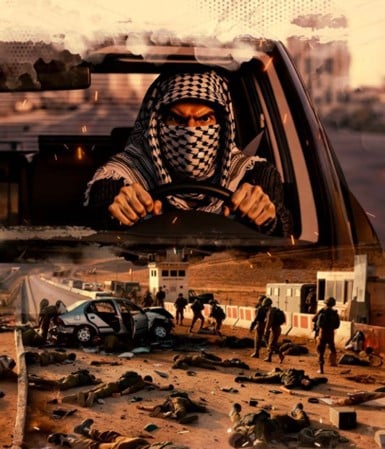
@mutared4 on X Iraq and Syria
- For the first time, Iraqi Prime Minister Sudani suggested he would order the American troops to leave Iraq. According to Intelligence analysts in the US army, an American departure could allow Al Qaeda, Islamic State, Khateb Hezbollah and other militia to take control of the country in a similar manner to how the Taliban took over Afghanistan. The leader of Khateb Hezbollah said they would continue to attack American bases until they leave the country.
- An American base, Al Harir, was attacked in Northern Iraq
- A reported Israeli/American strike in Syria that led to the death of senior IRGC official Reza Musawi. Iran vowed to revenge his death.
- A reported convoy of 2 trucks carrying missiles crossed the Iraqi border to Syria. One of the trucks joined a food truck convoy.
- After an attack on an American base near Irbil airport in Iraq with a UAV, the US attacked Khateb Iraq in retaliation. 7 American soldiers were injured in the incident.
Yemen
- The Houthis are threatening countries who are interested in joining the American-led naval force in the Red Sea. They threated to target Abu Dhabi with missiles if it decides to join the coalition. They ramped up the threats by threatening to disconnect the sea cables that pass under the Bab el Mandeb straits, saying they would bring its enemies to the stone age.
- The Houhtis held a military parade with a reported recruitment of over 20,000 soldiers, (called muhadeen in the Houthi statement) who would join forces in the “Al Aqsa Flood” Operation.
- The Houthis launched an attack drone toward Eilat and other locations in Israel.
- Commercial ship MSC UNITED was attacked using missiles.
- The US reported intercepting 12 UAVs, 3 ballistic missiles, and 2 cruise missiles. This was the first time in history that an American war ship intercepted a ballistic missile.
- Denmark announced that they will send a ship to the international coalition against the Houthi aggression.
- Two American assault ships, USS Bataan and USS Carter, were sent to back to the Eastern Mediterranean from the Red Sea despite the growing Houthi threat.
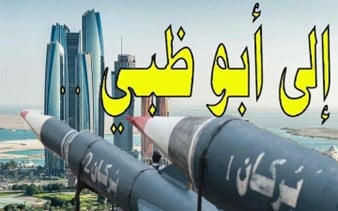
Credit: Hashem_Al_houthi2, Telegram 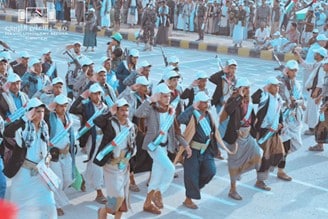
Credit: Mohammadlhouthi, Telegram Global Jihad
- The German police arrested a 30-year-old man under suspicion that he planned an attack on a cathedral in Cologne. Authorities received intelligence of a planned attack on New Year’s Eve. Security was ramped up outside the landmark building — which is the largest Gothic cathedral in northern Europe.
- European security services uncovered an ISIS plot to bomb churches with explosives across Europe. This led to arrests in Spain, Austria, France, and Germany during Christmas. The authorities are on high alert for attacks during the holiday season as Al Qaeda and ISIS are attempting to commit terrorist attacks under the pretense of the Israel-Hamas war and the strengthening of ISIS-K in Afghanistan.
- Turkish authorities arrested 32 ISIS operatives who planned terrorist attacks on synagogues, churches and the Iraqi Embassy.
Iran
- IRGC spokesperson said they would retaliate for the Israeli killing of Musawi which will be “a hard blow to Israel” at a time that is convenient for them.
- Iranian President Ibrahim Raisi referred to the killing of Musawi and said it shows desperation and frustration coming from Israel.
- Iranian affiliated groups circulated images of the Gibraltar straits suggesting that they intend to militarize this chokepoint as well as the Bab el Mandeb strait.
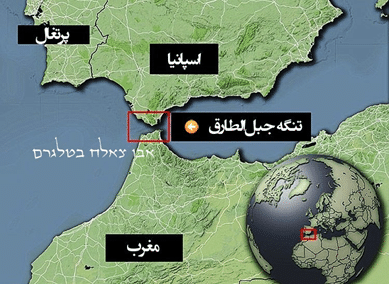
Credit: Abu Saleh, Telegram (https://t.me/abusalehg1) 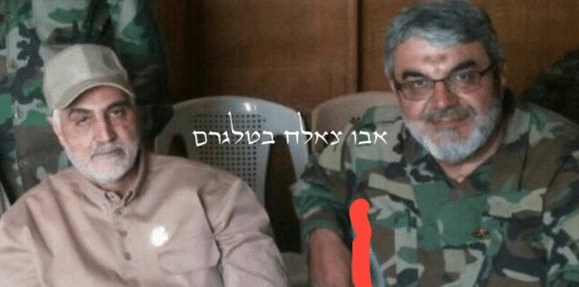
Two eliminated Iranian senior officials from the IRGC’s Qods Force, Qods Force Commander Qassem Soleimani (Left), eliminated in 2019 in Iraq; and IRGC Commander in Syria Razi Musawi (Right) | Credit: Abu Saleh, Telegram (https://t.me/abusalehg1)